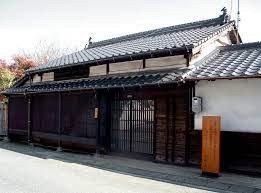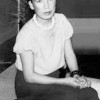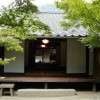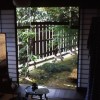- City and Installation Guide
- City Listings (new)
- Uno Chiyo's Birthplace
Uno Chiyo's Birthplace
City Listings
Geographical Address
Contact Info
Business Info
- Mon 10:00 am - 4:00 pm
- Tue Closed
- Wed 10:00 am - 4:00 pm
- Thu 10:00 am - 4:00 pm
- Fri 10:00 am - 4:00 pm Closed now
- Sat 10:00 am - 4:00 pm
- Sun 10:00 am - 4:00 pm
Uno Chiyo, (born Nov. 28, 1897, Iwakuni, Yamaguchi prefecture, Japan—died June 10, 1996, Tokyo), Japanese short-story writer and novelist who became better known for a personal life perceived as scandalous than for the break she made with the Japanese literary scene of the 1920s and ’30s.
After the publication of two early works in the 1920s, Uno moved to Tokyo, where she embarked on a career as a writer and embraced Western styles of dress and music. Divorced by her first husband, she married again, but that marriage foundered as Uno achieved success with her writing and pursued other lovers. She established her literary reputation with the novel Iro zange (1935; Confessions of Love), a vivid, widely popular account of the love affairs of a male artist. The character was based on the painter Tōgō Seiji, well known in Tokyo for having attempted suicide with a lover; Uno had a five-year relationship with him after her second divorce. As she acknowledged, her personal life, especially her relationships with men, fuelled her writing; her frank, spontaneous style was unique in Japanese fiction of the period.
In 1936 Uno founded Sutairu (“Style”), Japan’s first Western-style fashion magazine. In 1939 she married for a third time; the marriage would last for more than two decades. She turned her attention to Bunraku theatre and in 1942 published Ningyōshi Tenguya Hisakichi (“The Doll-Maker Tenguya Hisakichi”). She wrote the narrative in the voice of Tenguya Hisakichi, a carver of Bunraku puppets, as though she were telling his own story, a device she would later use in perhaps her finest work, the novella Ohan (1957; Eng. trans. as Ohan in The Old Woman, the Wife, and the Archer). Published 10 years after she had begun writing it, Ohan tells the story of a man who, after leaving his wife to live with a geisha, wants to return to his wife. In this and later works she was no longer the uninhibited “modern girl” but was instead exploring the world of her youth.
Map
-
{{#owner}}
-
{{#url}}
{{#avatarSrc}}
{{/avatarSrc}} {{^avatarSrc}} {{& avatar}} {{/avatarSrc}} {{name}} {{/url}} {{^url}} {{#avatar}} {{& avatar}} {{/avatar}} {{name}} {{/url}}
- {{/owner}} {{#created}}
- {{created}} {{/created}}






